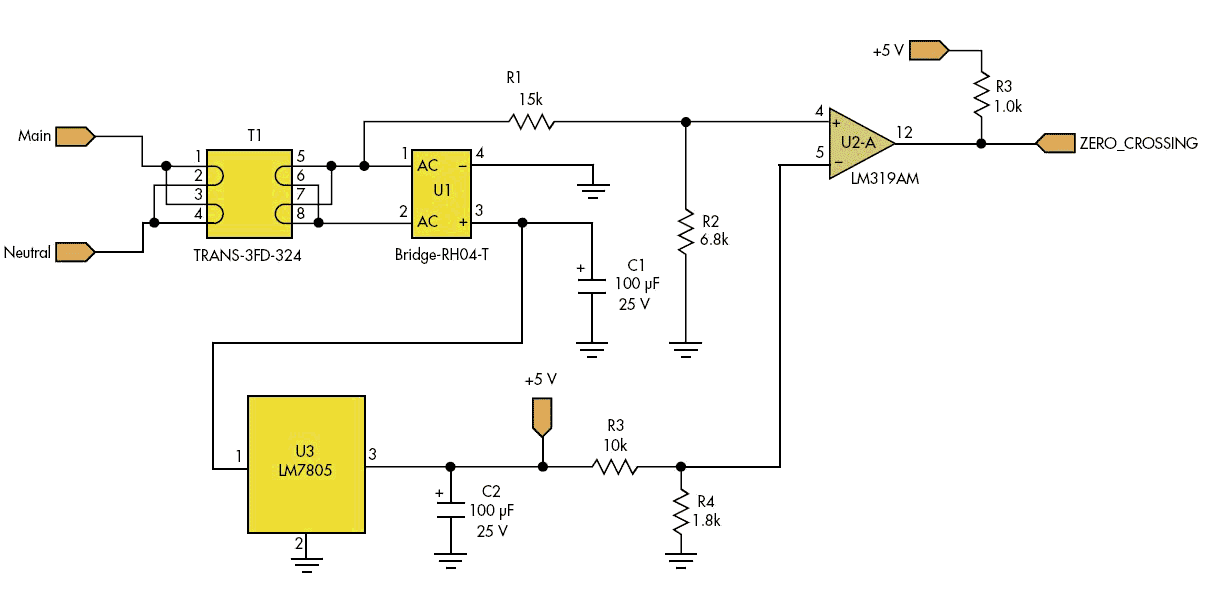To properly control AC sources using solid-state devices, you need a pulse to signal the start of the AC’s rising edge. Most of the time, however, tremendous noise levels plague power lines. There needs to be a way for the solid-state circuits to discriminate against this noise.
 Click to enlarge |
| Raising the negative reference above ground allows the comparator to avoid noise when determining an AC signal’s rising edge. |
A few adjustments to a zero-crossing detector allow it to operate above the noise level (see the figure). The transformer has very low power-driving capability, which improves the circuit’s safety. The transformer output passes to a traditional bridge for rectification, and a 100-µF capacitor filters the rectified signal to achieve a steady dc signal. The addition of an LM7805 regulator produces +5 V DC to power the comparator and set the output voltage level. A DC-DC converter such as the ADM660 can provide any negative voltages required.
The secret to determining the power line’s rising edge is to tap the AC side of the bridge network for comparison. Resistors R1 and R2 form a voltage divider that reduces the AC peak voltage to a level suitable for input to the comparator (U2). However, simply leaving the comparator’s other input connected to ground will yield erratic results in monitoring the zero-crossing level due to the noise.
To improve the results, add a small divider with R3 and R4 chosen to bring the comparator’s trigger level to the point that you see a constant cycle to cycle timing. The values shown work fine and yield highly satisfying results.
